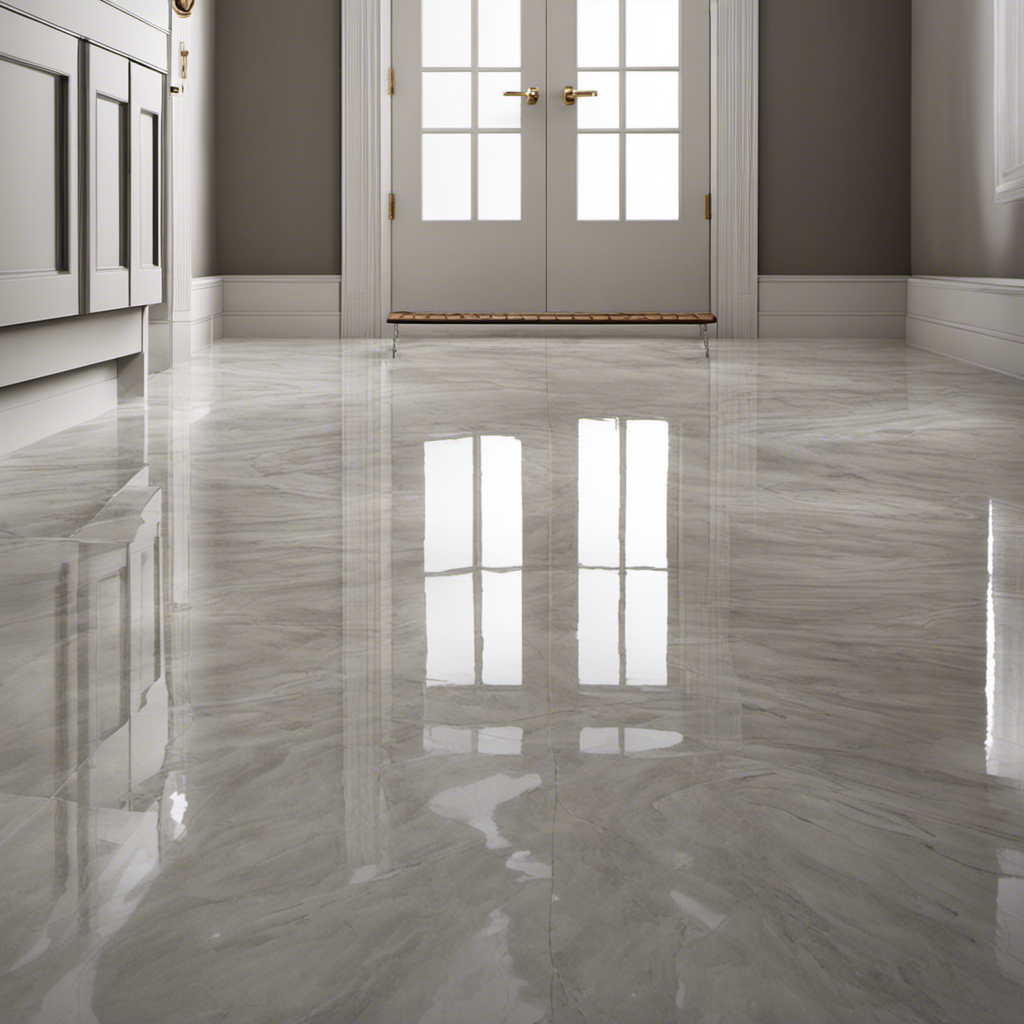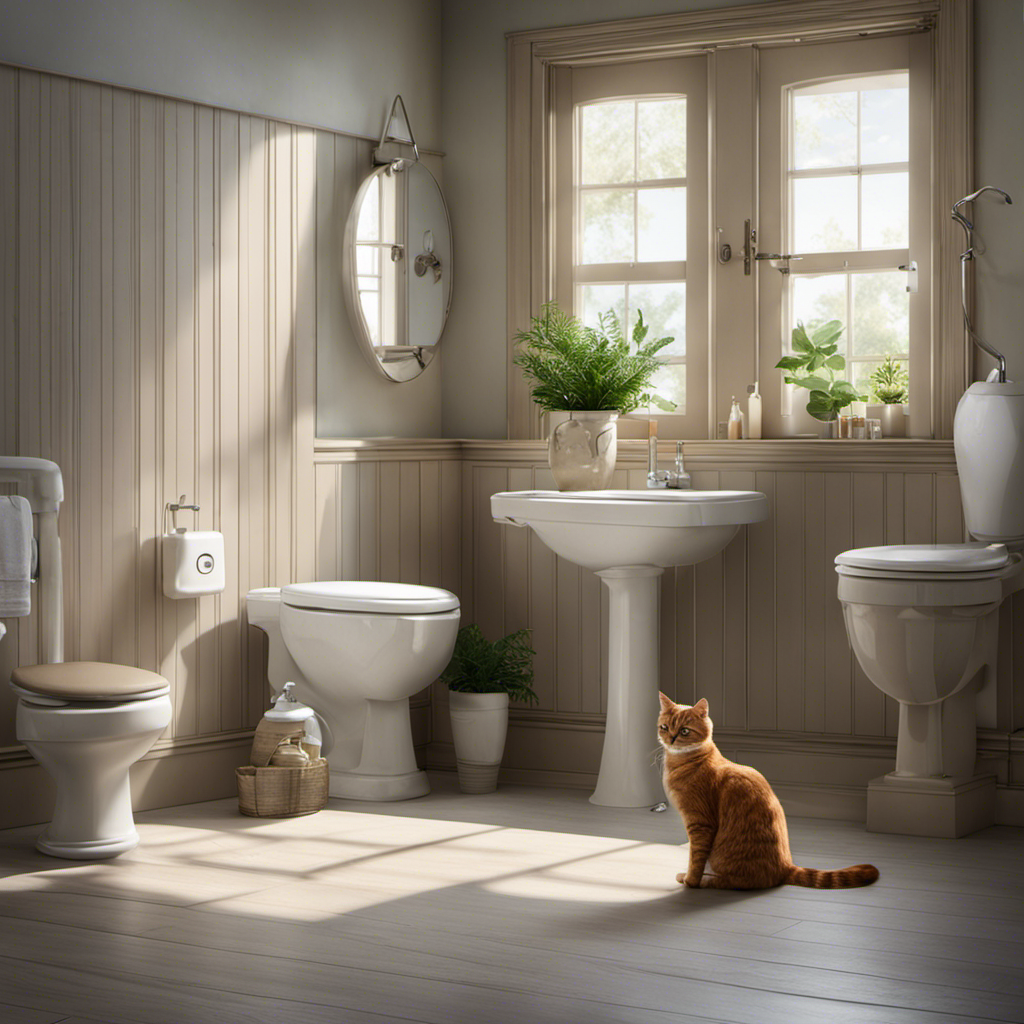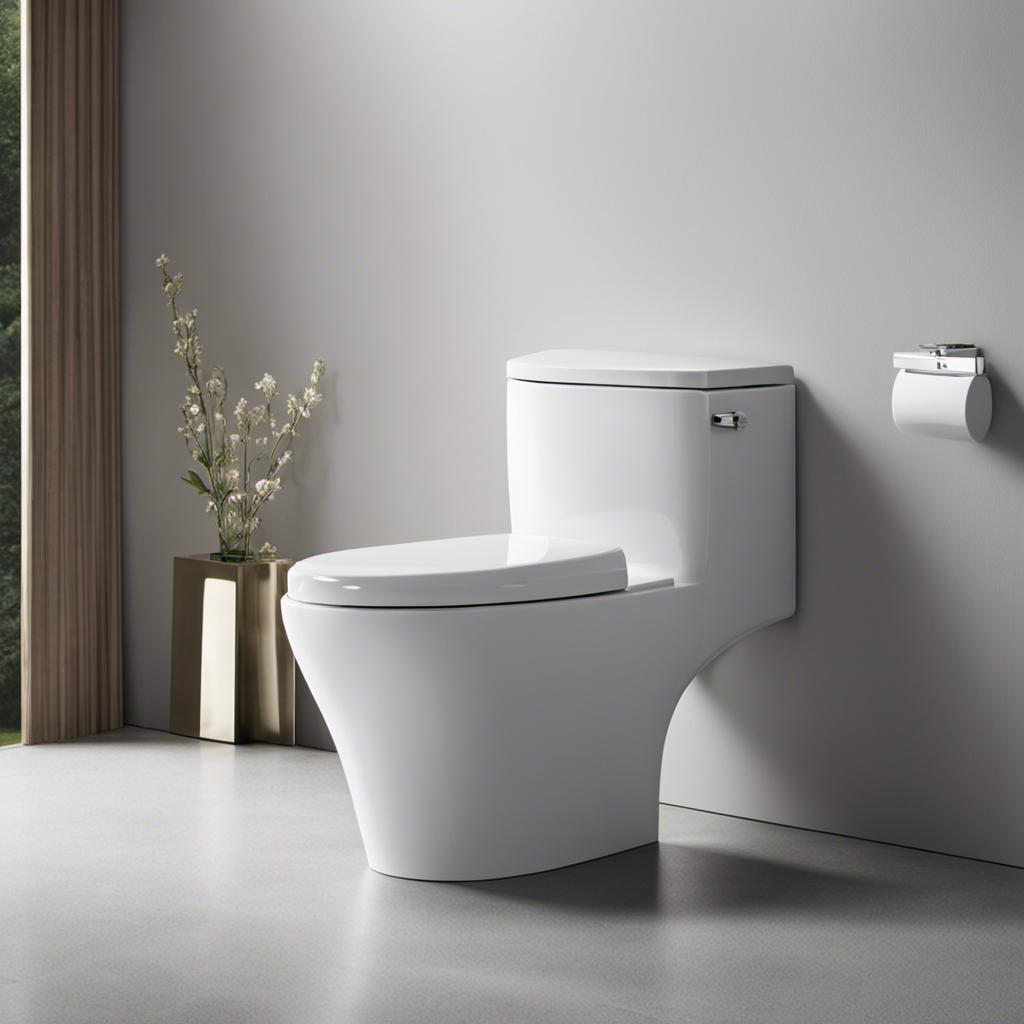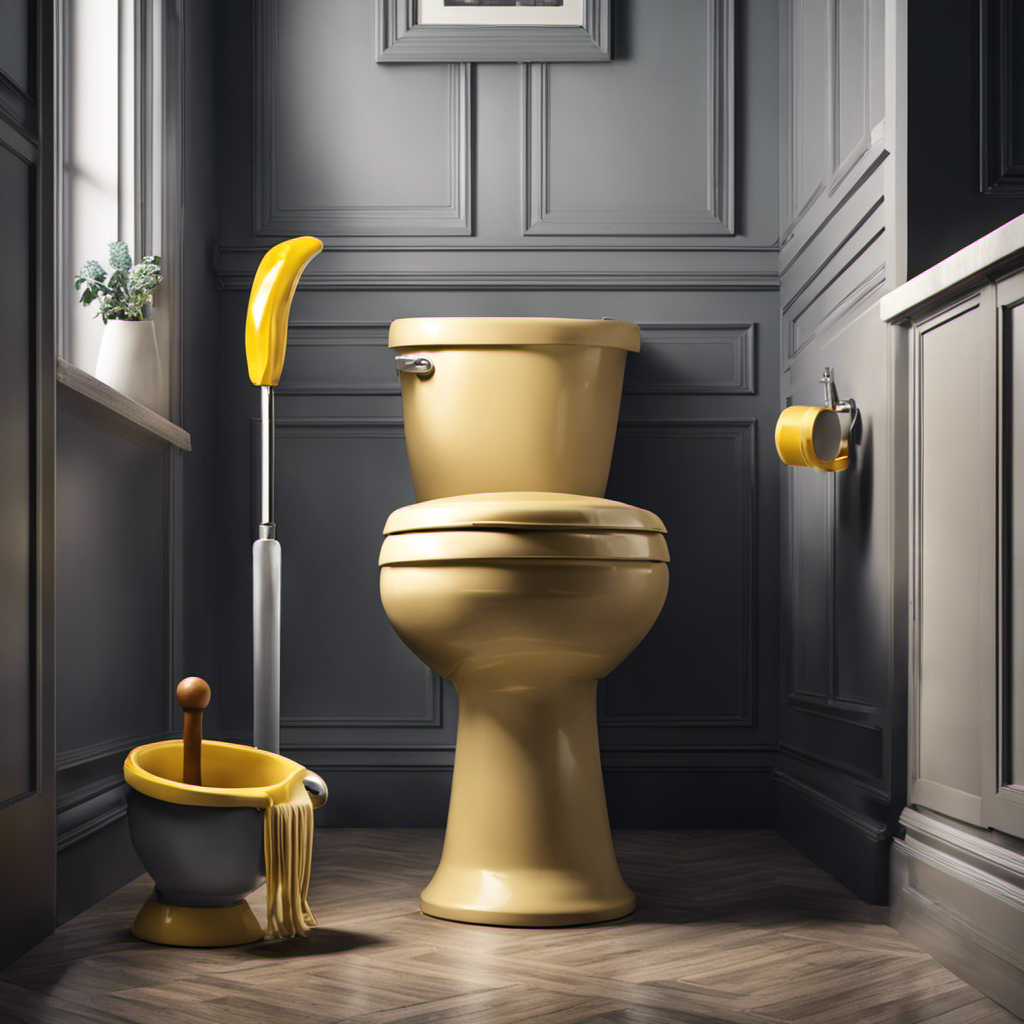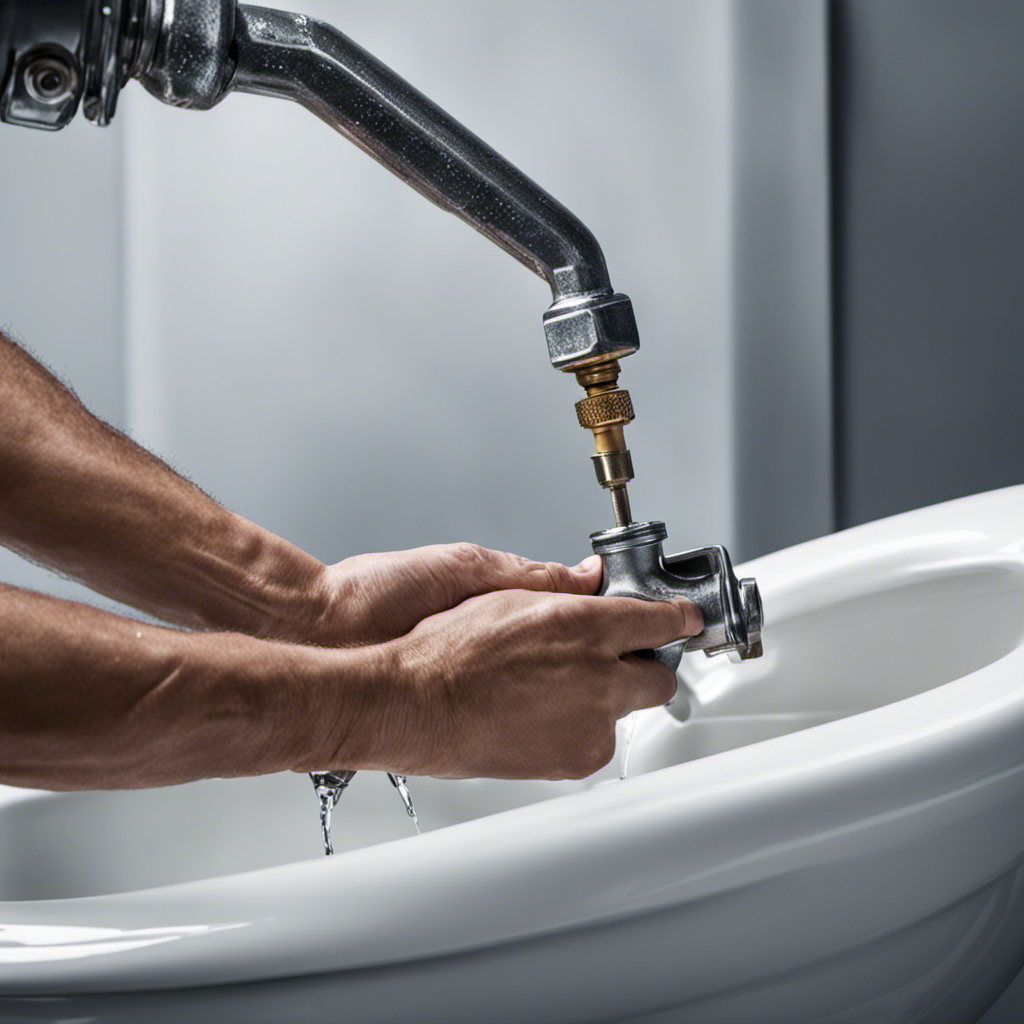I’ve had my fair share of frustrating plumbing issues, but one of the worst is a leaking toilet. It’s like a silent enemy, lurking beneath the surface, causing damage that you may not even notice until it’s too late.
That’s why it’s crucial to know the signs and be able to detect if your toilet is leaking underneath. In this article, I’ll guide you through the process of identifying leaks, checking for water damage, and troubleshooting and fixing any issues you may find.
Let’s dive in and put an end to those sneaky leaks!
Key Takeaways
- Water pooling around the base is a sign of a leaking toilet.
- Conduct a dye test by adding dye to the toilet tank and waiting for 15 minutes without flushing to detect leaks.
- Regularly inspect the toilet base and seals for discoloration, warping, or softness.
- Troubleshoot and fix toilet leaks by inspecting the flapper, water supply line, and ensuring the toilet tank is securely attached to the bowl.
Signs of a Leaking Toilet
One of the signs of a leaking toilet is if you notice water pooling around the base. There can be several causes of toilet leaks, such as a faulty wax ring, loose connections, or a cracked toilet bowl.
It is important to address these issues promptly to avoid further damage and costly repairs. However, it is essential to be aware of common toilet repair mistakes that can exacerbate the problem.
Some common mistakes include using too much force when tightening connections, using improper sealing materials, or neglecting to replace worn-out parts. By avoiding these mistakes, you can effectively address toilet leaks and prevent water damage.
Now that we understand the signs of a leaking toilet, let’s move on to checking for water damage.
Checking for Water Damage
Inspecting your bathroom floor for any signs of water damage is crucial in identifying common causes of leaks and preventing future water damage. Start by carefully examining the area around the base of your toilet. Look for any discoloration, warping, or soft spots in the flooring. These can indicate water leakage.
Additionally, check for any water stains or mold growth on the walls or baseboards near the toilet. If you notice any of these signs, it is important to take immediate action to address the issue.
To prevent future water damage, ensure that your toilet is properly installed and sealed. Regularly inspect the toilet’s components, such as the flapper valve and fill valve, and promptly fix any leaks or malfunctions.
Regular maintenance and early detection are key to avoiding costly water damage in your bathroom.
Detecting Leaks With Dye Test
First, you can easily detect leaks in your toilet by conducting a dye test. To begin, turn off the water supply to the toilet and remove the tank lid. Add a few drops of food coloring or a dye tablet into the tank. Wait for about 15 minutes without flushing. If the water in the toilet bowl changes color, it means there is a leak.
Another way to determine if your toilet is leaking is by using a water meter. Take a reading of your water meter, then refrain from using any water for a few hours. After that time, check the meter again. If the reading has increased, it indicates a leak.
Conducting a toilet tank inspection is another effective method. Look for any cracks or damage in the tank, as well as any loose or worn-out components. This will help you identify any potential sources of leaks.
Now, let’s move on to inspecting the toilet base and seals.
Inspecting the Toilet Base and Seals
To ensure there are no leaks, you should check the toilet base and seals for any signs of water damage or deterioration.
A thorough toilet base inspection is essential in identifying seal damage or potential leaks. Start by visually examining the base of the toilet for any discoloration, warping, or softness. These are signs of water damage and may indicate a leak.
Next, check the seals around the base, such as the wax ring or the flange gasket, for any cracks, gaps, or wear. These seals are crucial in preventing water from seeping out.
If you notice any damage or deterioration, it is important to address the issue promptly to prevent further leakage and potential water damage.
Regularly inspecting the toilet base and seals is key to maintaining a leak-free bathroom.
Troubleshooting and Fixing Toilet Leaks
If you notice any water damage or deterioration around the toilet base and seals, it’s important to promptly address the issue to prevent further leakage. To troubleshoot and fix toilet leaks, there are a few key steps you can take. First, inspect the toilet flapper for any signs of wear or damage. If necessary, replace the flapper to ensure a proper seal. Next, check the water supply line for any leaks or cracks. Tighten any loose connections and replace the line if needed. Additionally, make sure the toilet tank is securely attached to the bowl to prevent any leaks from occurring there. By following these steps and conducting regular inspections, you can prevent costly water damage and ensure your toilet is functioning properly.
| Steps to Troubleshoot and Fix Toilet Leaks |
|---|
| 1. Inspect the toilet flapper for wear or damage |
| 2. Replace the flapper if necessary |
| 3. Check the water supply line for leaks or cracks |
| 4. Tighten loose connections or replace the line |
| 5. Ensure the toilet tank is securely attached to the bowl |
Frequently Asked Questions
How Much Water Usage Is Considered Normal for a Toilet?
I’m not sure about the specific amount, but it is important to consider toilet water efficiency and consumption. Understanding what is considered normal can help identify any potential issues with water leakage.
Can a Leaking Toilet Cause Damage to the Flooring?
A leaking toilet can cause significant damage to the flooring if left untreated. It is important to address toilet leakage promptly to prevent costly repairs and potential health hazards associated with water damage.
Are There Any Specific Brands or Models of Toilets That Are More Prone to Leaks?
Some toilet brands or models may be more prone to leaks, but regular toilet maintenance and following proper toilet leakage prevention tips can help minimize the risk of leaks and potential damage to the flooring.
Is It Possible for a Leaking Toilet to Cause an Increase in Water Bills?
Yes, a leaking toilet can definitely cause an unwanted increase in water bills. Look out for signs like a constantly running toilet, water stains, or a damp floor around the base.
Can a Leaking Toilet Lead to Mold Growth in the Bathroom?
Yes, a leaking toilet can lead to mold growth in the bathroom. It’s important to detect and prevent toilet leaks to avoid moisture buildup, which can create an ideal environment for mold to thrive.
Conclusion
In conclusion, detecting a leaking toilet underneath is no ordinary task. It requires a keen eye and a determined spirit. By carefully examining signs of water damage, conducting a dye test, and inspecting the toilet base and seals, you can become a leak detective extraordinaire.
Remember, a leaking toilet can cause serious damage if left unchecked. So, don’t be fooled by its innocent appearance. Dive into the depths of toilet troubleshooting and fix those leaks like a true expert.
Your bathroom will thank you!
